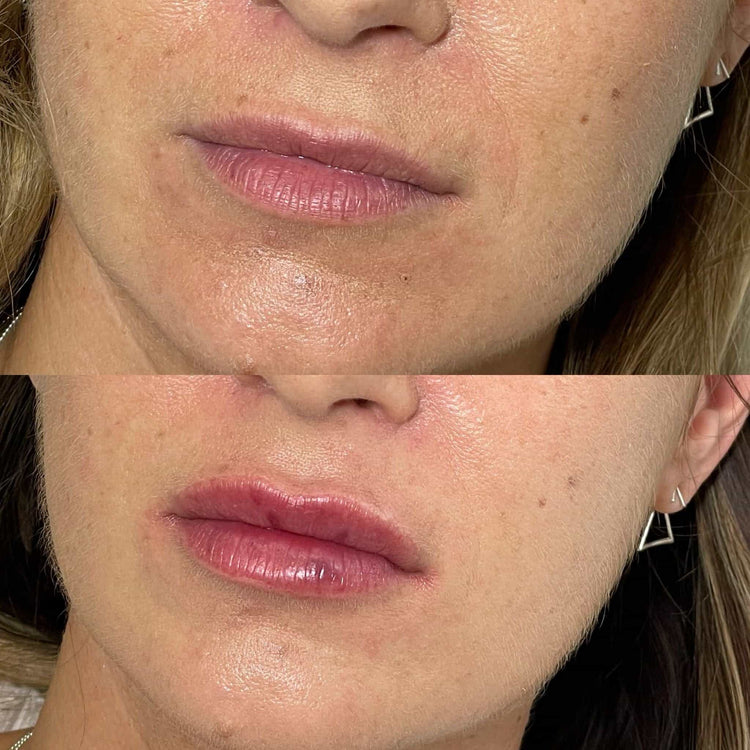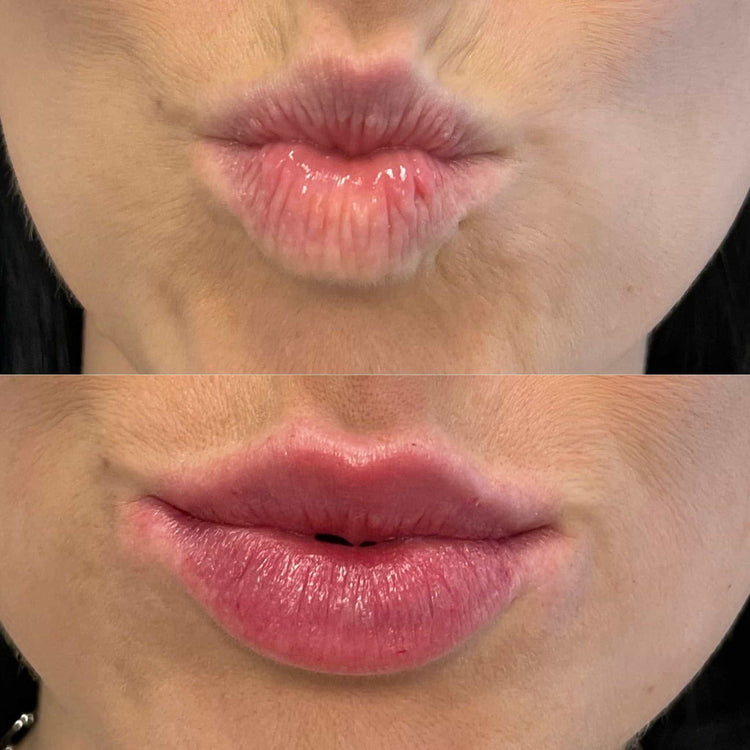Types of Lip Fillers
Lip fillers have become increasingly popular for enhancing lip size and shape, offering individuals a way to achieve fuller, more defined lips. Different types of fillers are available, each with unique properties and compositions. Hyaluronic acid-based fillers are among the most common, providing a natural look and feel due to their ability to attract and retain moisture. Other options include poly-L-lactic acid (PLLA) fillers, which stimulate collagen production for long-lasting results, and silicone fillers, though these carry potential risks and are less commonly used.
Hyaluronic Acid Fillers
Lip fillers have become increasingly popular for enhancing lip size and shape, offering individuals a way to achieve fuller, more defined lips. Different types of fillers are available, each with unique properties and compositions. Hyaluronic acid-based fillers are among the most common, providing a natural look and feel due to their ability to attract and retain moisture. Other options include poly-L-lactic acid (PLLA) fillers, which stimulate collagen production for long-lasting results, and silicone fillers, though these carry potential risks and are less commonly used.
When considering filler dissolving treatment, it’s important to understand that not all lip fillers are created equal.
- Hyaluronic acid fillers are typically readily dissolved with an enzyme called hyaluronidase. This allows for easy removal if desired or if complications arise.
- Poly-L-lactic acid (PLLA) fillers, on the other hand, work differently by stimulating collagen production. They don’t dissolve easily and require different methods for removal.
Silicone fillers are even more difficult to remove and are generally not recommended due to potential risks associated with their use.
Poly-Lactic Acid (PLLA) Fillers
When considering filler dissolving treatment, it’s important to understand that not all lip fillers are created equal. Hyaluronic acid fillers are typically readily dissolved with an enzyme called hyaluronidase. This allows for easy removal if desired or if complications arise.

Poly-L-lactic acid (PLLA) fillers, on the other hand, work differently by stimulating collagen production. They don’t dissolve easily and require different methods for removal.
Compatibility with Filler Dissolving Treatment
When considering filler dissolving treatment, it’s important to understand that not all lip fillers are created equal. Different types of fillers have varying compositions and reactivities to dissolving agents.
Hyaluronic Acid Fillers
Hyaluronic acid fillers are generally suitable for filler dissolving treatment as they can be effectively broken down using an enzyme called hyaluronidase. This makes them a reversible option for those who may wish to remove the filler or adjust its results.
Poly-L-lactic acid (PLLA) fillers, which work by stimulating collagen production, are not as easily dissolved and require different techniques for removal.
Silicone fillers are generally not recommended for use in lip augmentation due to potential risks and difficulties associated with their removal.
Poly-Lactic Acid (PLLA) Fillers
When considering filler dissolving treatment, it’s important to understand that not all lip fillers are created equal. Different types of fillers have varying compositions and reactivities to dissolving agents.
Hyaluronic acid fillers are generally suitable for filler dissolving treatment as they can be effectively broken down using an enzyme called hyaluronidase. This makes them a reversible option for those who may wish to remove the filler or adjust its results.
- Poly-L-lactic acid (PLLA) fillers, which work by stimulating collagen production, are not as easily dissolved and require different techniques for removal.
Silicone fillers are generally not recommended for use in lip augmentation due to potential risks and difficulties associated with their removal.
Considerations for Treatment Effectiveness
When considering filler dissolving treatment, it’s crucial to understand that not all lip fillers are created equal. Different types of fillers have varying compositions and reactivities to dissolving agents.
Filler Type and Concentration
Hyaluronic acid fillers are generally suitable for filler dissolving treatment as they can be effectively broken down using an enzyme called hyaluronidase. This makes them a reversible option for those who may wish to remove the filler or adjust its results. Poly-L-lactic acid (PLLA) fillers, which work by stimulating collagen production, are not as easily dissolved and require different techniques for removal.
- Silicone fillers are generally not recommended for use in lip augmentation due to potential risks and difficulties associated with their removal.
Therefore, when considering filler dissolving treatment, it’s essential to consult with a qualified healthcare professional who can assess the type of filler used and discuss the most appropriate options for removal.
Time Since Injection
When considering filler dissolving treatment, it’s important to understand that not all lip fillers are created equal. Different types of fillers have varying compositions and reactivities to dissolving agents.
- Hyaluronic acid fillers are generally suitable for filler dissolving treatment as they can be effectively broken down using an enzyme called hyaluronidase. This makes them a reversible option for those who may wish to remove the filler or adjust its results.
- Poly-L-lactic acid (PLLA) fillers, which work by stimulating collagen production, are not as easily dissolved and require different techniques for removal.
Silicone fillers are generally not recommended for use in lip augmentation due to potential risks and difficulties associated with their removal.
Individual Body Response
The effectiveness of filler dissolving treatment depends on the type of filler used. Hyaluronic acid fillers, commonly used in lip augmentation, can be readily dissolved using an enzyme called hyaluronidase.
This makes them a reversible option, allowing individuals to remove the filler or adjust its results if desired. Poly-L-lactic acid (PLLA) fillers, on the other hand, work differently by stimulating collagen production. They are not as easily dissolved and require different methods for removal.
Silicone fillers pose additional challenges due to their composition and potential risks associated with their removal, making them generally unsuitable for lip augmentation.
Potential Risks and Side Effects
Potential risks and side effects can vary depending on the type of filler used. Hyaluronic acid fillers are generally considered safe, with common side effects being mild swelling, redness, and bruising. These typically subside within a few days.
Bruising and Swelling
Potential risks and side effects associated with lip fillers can vary depending on the type of filler used and individual patient factors.
Hyaluronic acid fillers, the most common type, generally have a good safety profile. Common side effects include temporary swelling, redness, bruising, and tenderness at the injection site. These usually resolve within a few days to a week.
Less common but more serious potential complications may include allergic reactions, infection, or migration of the filler.
Poly-L-Lactic acid (PLLA) fillers, while stimulating collagen production for long-lasting results, can also cause swelling, redness, and bruising. In rare cases, there’s a risk of granulomas, which are small lumps of tissue that form around foreign material.
Silicone fillers, though less common, carry more significant risks due to their difficulty in removal and potential for long-term complications such as granuloma formation, inflammation, and scarring.
Allergic Reactions
Potential risks and side effects associated with lip fillers can vary depending on the type of filler used and individual patient factors. Hyaluronic acid fillers, the most common type, generally have a good safety profile. Common side effects include temporary swelling, redness, bruising, and tenderness at the injection site. These usually resolve within a few days to a week.
Less common but more serious potential complications may include allergic reactions, infection, or migration of the filler.
Poly-L-lactic acid (PLLA) fillers, while stimulating collagen production for long-lasting results, can also cause swelling, redness, and bruising. In rare cases, there’s a risk of granulomas, which are small lumps of tissue that form around foreign material.
Silicone fillers, though less common, carry more significant risks due to their difficulty in removal and potential for long-term complications such as granuloma formation, inflammation, and scarring.
Post-Treatment Care
Understanding the different types of lip fillers is crucial when considering filler dissolving treatment.
Ice Packs and Compression
After any cosmetic procedure, proper post-treatment care is essential to ensure optimal healing and minimize risks. For lip fillers specifically, ice packs and compression can play a vital role in managing swelling and discomfort.
Applying ice packs wrapped in a towel to the treated area for short periods (15-20 minutes at a time) can help reduce inflammation and constrict blood vessels, minimizing swelling. Compression using a soft bandage or cloth also aids in reducing swelling by gently squeezing excess fluid from the area.

Avoidance of Certain Activities
Understanding the different types of lip fillers is crucial when considering filler dissolving treatment. After any cosmetic procedure, proper post-treatment care is essential to ensure optimal healing and minimize risks. For lip fillers specifically, ice packs and compression can play a vital role in managing swelling and discomfort.
Applying ice packs wrapped in a towel to the treated area for short periods (15-20 minutes at a time) can help reduce inflammation and constrict blood vessels, minimizing swelling. Compression using a soft bandage or cloth also aids in reducing swelling by gently squeezing excess fluid from the area.
- Avoid touching or picking at the injection site as this can increase the risk of infection and disrupt healing.
- Refrain from strenuous activities, excessive exercise, or facial massage for a few days following the treatment to minimize swelling and allow the filler to settle properly.
- Stay hydrated by drinking plenty of water to aid in tissue repair and flush out toxins.
It’s essential to follow your healthcare provider’s specific post-treatment instructions carefully.
Follow-Up Appointments
Proper post-treatment care is crucial for ensuring optimal healing and minimizing risks after any cosmetic procedure, including lip fillers. Following a qualified healthcare professional’s recommendations is vital.
For lip fillers specifically, ice packs and compression can be beneficial in managing swelling and discomfort. Applying ice packs wrapped in a towel to the treated area for short periods (15-20 minutes at a time) helps reduce inflammation and constrict blood vessels, minimizing swelling. Compression using a soft bandage or cloth also aids in reducing swelling by gently squeezing excess fluid from the area.
To further promote healing and minimize complications:
- Avoid touching or picking at the injection site to prevent infection and disruption of healing.
- Refrain from strenuous activities, excessive exercise, or facial massage for a few days following treatment to minimize swelling and allow the filler to settle properly.
- Stay hydrated by drinking plenty of water to support tissue repair and flush out toxins.
It’s essential to attend all scheduled follow-up appointments with your healthcare provider. These appointments allow them to monitor your healing progress, address any concerns, and provide further guidance on post-treatment care.
Alternatives to Dissolving Treatment
Understanding the different types of lip fillers is crucial when considering filler dissolving treatment. Different fillers have varying compositions and reactivities to dissolving agents. Hyaluronic acid fillers are generally suitable for dissolution treatment as they can be broken down with hyaluronidase. Poly-L-lactic acid (PLLA) fillers, on the other hand, work differently by stimulating collagen production and require different removal techniques.
- The Impact Of THC Drinks On Your Brain And Body - December 10, 2025
- The Best THC Seltzers For Summer Gatherings - December 8, 2025
- The Benefits Of CBD Infused Gummies For Pain Management - December 6, 2025
